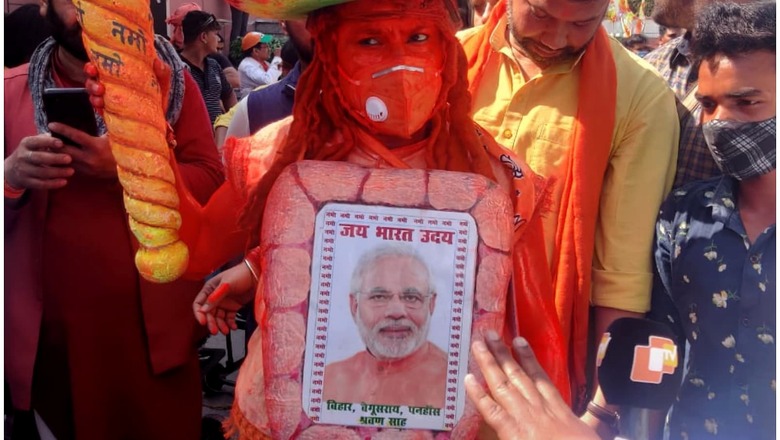
views
After eight years and several policy reversals, it seems the Modi electoral magic remains intact. As one TV anchor put it, “Modi ka bhaashan aur Yogi ka saashan” (Modi’s speeches and Yogi’s administration) made this stupendous victory possible. Glib lines aside, the reality is more complex. While a localised victory can be attributed to local administration, nothing explains how the BJP overcame anti-incumbency in four different states other than central government policies and programmes. The synergy required to implement them definitely points to wholesome Centre-state coordination but the role of Modi simply can’t be overlooked or overstated here.
The fact remains that when you come up with policies like giving plumbed toilets and electricity connections to everyone, combined with private sector initiatives like democratisation of data access, you’re essentially touching every single person in a substantial way. The issue always was how this was approached by individual chief ministers since they were the executors of any policies. This is where the Centre-state synergy begins to show.
Yogi Adityanath, for example, decided he would focus on law and order which he did quite admirably and mirrored Modi’s centralisation of power in his office; in doing so, he made himself solely responsible (and accountable) for implementation. Unsurprisingly, the BJP’s vote share it seems has actually increased quite significantly in this election, even if the total seats have dropped. Remarkably a large bulk of the Samajwadi Party’s gains seem to have come from erstwhile BSP and Congress seats. All of this shows a significant consolidation behind the BJP despite some missteps.
What were the missteps that could have affected the BJP’s chances? For starters, there was the migrant labour crisis of the first lockdown. Given how much of Delhi’s workforce comes from rural UP combined with the devastating effects of that lockdown, it was assumed this would affect the BJP’s prospects. It says a lot that the economic management since then has ensured growth and seemingly more than just mitigated the effects, if the voter share increase is anything to go by.
Then there was the farm law debacle where a year’s worth of disruptive protest resulted in a humiliating reversal of central government policy. While predictions of this having negative consequence for the BJP in Punjab turned out to be true, the spillover effects in western UP were effectively contained and/or rolled back. Again this had just as much to do with Modi’s political calculus as Yogi’s ability to prevent the protests from escalating beyond the point that it got disruptive in UP.
Finally, there was the belief that the Hathras case would dent a significant Modi (not BJP) vote bank — women. Much of the creation of this vote bank had to do with those very same electricity and toilet schemes, not to mention doing away with triple talaq that had led to a significant percentage of Muslim women voting for him. Similarly, it was Amit Shah’s cobbling together of many communities, especially Dalits, that had overnight turned the BJP into a formidable force in UP. It was believed that the handling of the Hathras rape would dent the popularity of the party with women as well as with Dalits. This again turned out be off-the-mark as clearly Modi’s focused development schemes seem to transcend these temporary setbacks.
From all of this, one thing emerges quite clearly. The BJP unlike its amateur competitors is a political animal. It clearly calculates the fallout of every step carefully and comes up with focused mitigation measures. While the BJP state victories must be lauded as a win for their respective state leaderships, the fact remains that these victories are built on a platform created by Modi.
To use a tennis analogy: Game Yogi, Set BJP, Match Modi.
The writer is a senior fellow at the Institute of Peace and Conflict Studies. The views expressed in this article are those of the author and do not represent the stand of this publication.
Read all the Latest Opinion News and Breaking News here




















Comments
0 comment